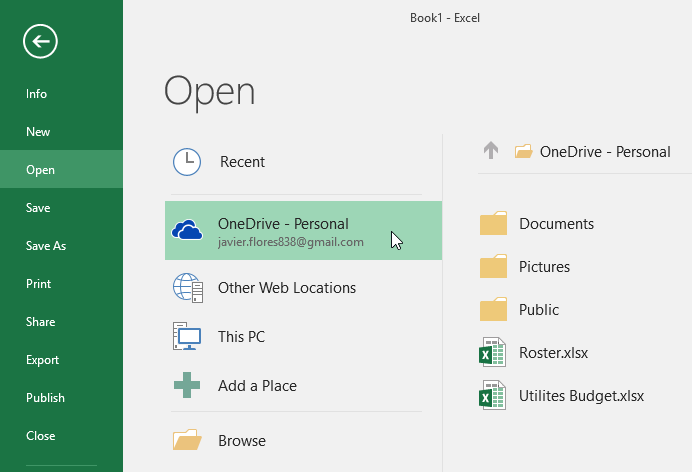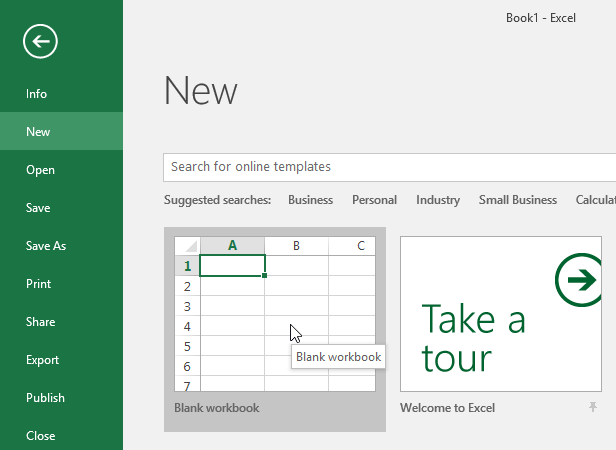

/en/excel/understanding-onedrive/content/
Excel files are called workbooks. Whenever you start a new project in Excel, you'll need to create a new workbook. There are several ways to start working with a workbook in Excel. You can choose to create a new workbook—either with a blank workbook or a predesigned template—or open an existing workbook.
Watch the video below to learn more about creating and opening workbooks in Excel.
Whenever you're opening or saving a workbook, you'll have the option of using your OneDrive, which is the online file storage service included with your Microsoft account. To enable this option, you'll need to sign in to Office. To learn more, visit our lesson on Understanding OneDrive.



In addition to creating new workbooks, you'll often need to open a workbook that was previously saved. To learn more about saving workbooks, visit our lesson on Saving and Sharing Workbooks.




If you frequently work with the same workbook, you can pin it to Backstage view for faster access.



A template is a predesigned spreadsheet you can use to create a new workbook quickly. Templates often include custom formatting and predefined formulas, so they can save you a lot of time and effort when starting a new project.



You can also browse templates by category or use the search bar to find something more specific.

It's important to note that not all templates are created by Microsoft. Many are created by third-party providers and even individual users, so some templates may work better than others.
Sometimes you may need to work with workbooks that were created in earlier versions of Microsoft Excel, like Excel 2010 or Excel 2007. When you open these types of workbooks, they will appear in Compatibility Mode.
Compatibility Mode disables certain features, so you'll only be able to access commands found in the program that was used to create the workbook. For example, if you open a workbook created in Excel 2003, you can only use tabs and commands found in Excel 2003.
In the image below, you can see that the workbook is in Compatibility Mode, which is indicated at the top of the window to the right of the file name. This will disable some Excel features, which will be grayed out on the Ribbon.

To exit Compatibility Mode, you'll need to convert the workbook to the current version type. However, if you're collaborating with others who only have access to an earlier version of Excel, it's best to leave the workbook in Compatibility Mode so the format will not change.
If you want access to the newer features, you can convert the spreadsheet to the current file format.
Note that converting a file may cause some changes to the original layout of the workbook.



/en/excel/saving-and-sharing-workbooks/content/